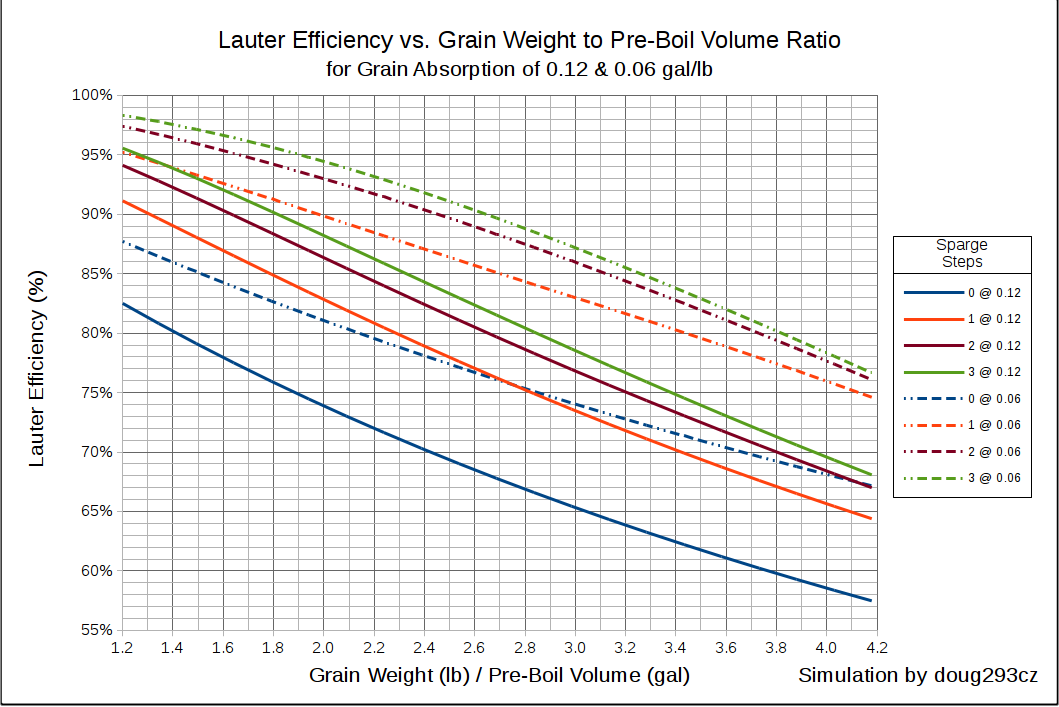moreb33rplz
Well-Known Member
- Joined
- Mar 25, 2014
- Messages
- 679
- Reaction score
- 358
I am 3 batches in my first BIAB batches. I do 2.5 gallon batches, and use a 5 gallong kettle and standard mesh bag.
First batch was about 50% efficiency, next 2 were about 60-65%. I made sure I had a super duper fine crush and squeezed/let drain the bag after mashing on the second 2.
But don't know what I can do to get higher? Ideally I'd like 70-75%. My mash temps are expected (low 150s), I stir like a mother and dont' notice doughballs, I don't measure but calcs say my pH should be OK, and my last 2 crushes have been very well crushed.
Only thing that is new for me is the mash grist ratio. I use 4 gallons for each beer to hit my pre-boil volume. So with 6'ish pounds of grain that's like 2.75-3 or something. I used to use 1.25-1.5 on my old grain system.
Does grist ratio affect efficiency?
First batch was about 50% efficiency, next 2 were about 60-65%. I made sure I had a super duper fine crush and squeezed/let drain the bag after mashing on the second 2.
But don't know what I can do to get higher? Ideally I'd like 70-75%. My mash temps are expected (low 150s), I stir like a mother and dont' notice doughballs, I don't measure but calcs say my pH should be OK, and my last 2 crushes have been very well crushed.
Only thing that is new for me is the mash grist ratio. I use 4 gallons for each beer to hit my pre-boil volume. So with 6'ish pounds of grain that's like 2.75-3 or something. I used to use 1.25-1.5 on my old grain system.
Does grist ratio affect efficiency?




